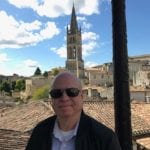Morocco: Part 1
Morocco, significant in North Africa, is historic and culturally rich and compelling to world travelers. Add the intensity of an annual international travel conference like PURE Travel Experience. To travel professionals, PURE, which focuses on the smaller, unique, and lesser known travel destinations, is stimulation overload. Together, Marrakech and PURE are as good as it gets.
To maximize my time and discovery of my first real trip to Morocco, I flew into ancient Fez several days early. This was on TAP Air Portugal, an expanding airline with multiple North American gateways. The Lisbon Airport is very overcrowded with many remote gates and longer immigration lines. Patience is important here. Fez was once the capital of Morocco, and it retains an authentic and local feel. With comfortable accommodations to retreat to after the real maze of the medina, Fez works.
I stayed at the Amani Fez in the medina itself with just 19 rooms. Service was fantastic, and there was always someone to assist. With modern navigation unusable in the medina itself, a professional guide or at least someone from the hotel should be with you to help you find your way home. This is not a reason to skip the medina, just a caution of how to do it. The narrow alleys with leather, food, dining, metal, spices, workshops, and fabrics will be rewarding.
One day, I used a private driver-guide and vehicle to explore outside Fez including the ancient abandoned Roman city of Volubilis, dating back from 3rd century BC. The luxury here was the lack of crowds and opportunities to really study the ruins. Moving on, the living city of Meknes had both ancient and modern elements. It was an imperial city, and it dates back from the 11th century.
It was turned into a stately capital in the 17th century, complete with huge, thick, and high walls. Much remains today with the mix of ancient and modern in a city of about 600,000 people. Much of the countryside looks like rural California.



